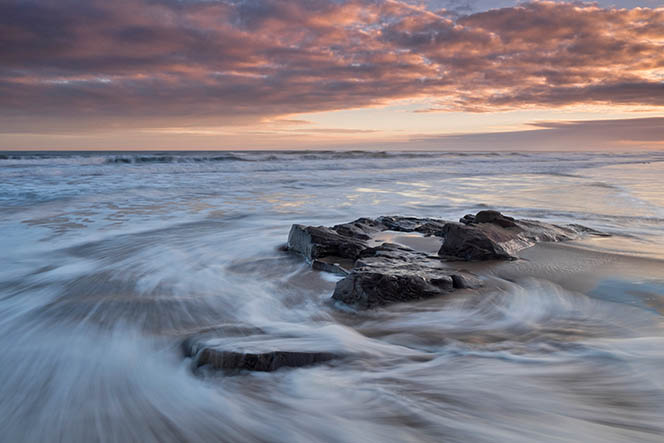
Coastlines, whether they’re rocky or sandy, are usually exciting places to photograph. This is mainly due to the effects of the tides, which constantly alter the appearance of a coastline. This variability means you have to have your wits about you. If you don’t you may come away disappointed with your photographs. Here are a few helpful tips that may just come in useful…
Footprints on an otherwise pristine beach are visually distracting. Shooting at dawn after high tide helps to reduce the likelihood that someone will have walked across the sand before you begin shooting. However, when you walk on the beach stick either to the water’s edge or along the top of the beach. You don’t want to ruin a potential shot by adding your own footprints!
The length of the shutter speed you use will affect how waves are recorded in a shot. A shutter speed of approximately ½ a second will record a wave as a blur but still retain interesting textural detail in the wave. Shutter speeds longer than 15 seconds will begin to produce a more abstract, misty effect with no detail in the waves. Unless you’re shooting before sunrise or after sunset you may need to use an ND filter to lengthen the shutter speed sufficiently.
Using a long exposure to record the movement of waves around rocks on the tideline produces striking looking images. However, the strength of a wave – and therefore how far it washes up the shore – is often hard to calculate. This makes it more difficult to predict the final effect in the image. One way round this is to wait until the wave has broken and is just beginning to recede before firing the shutter.

